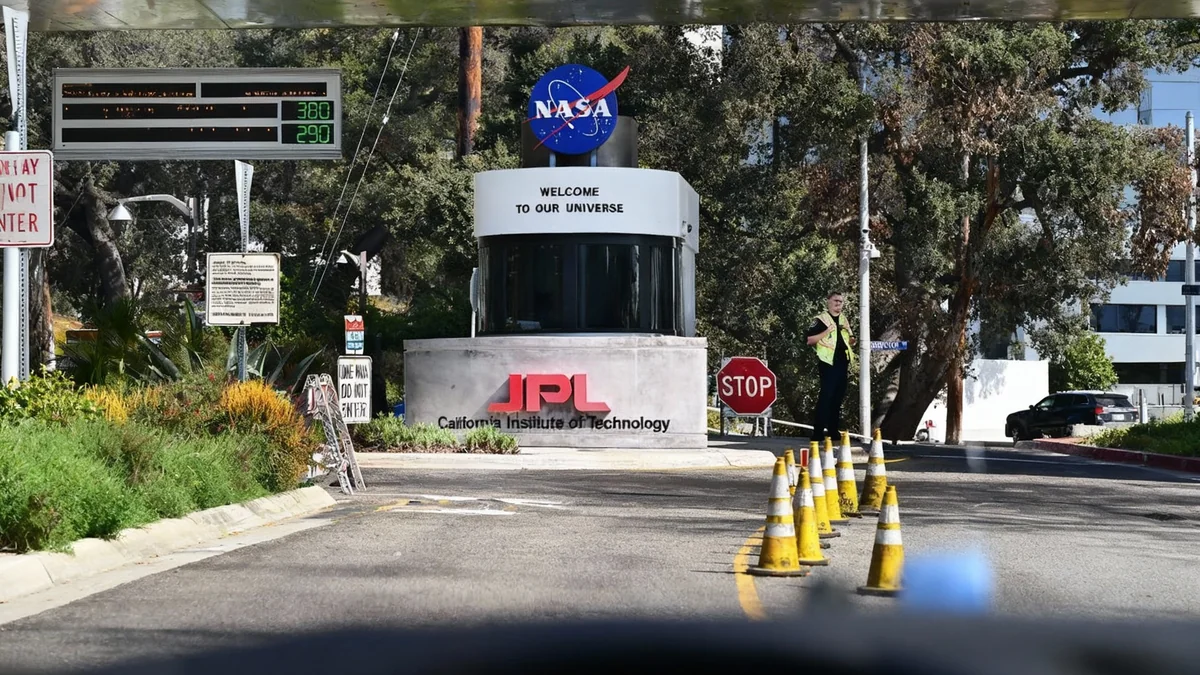NASA's Jet Propulsion Laboratory (JPL) has laid off 550 employees, representing over 10% of its workforce, following significant funding reductions from Congress for its flagship Mars Sample Return mission. This marks the fourth round of job cuts in two years, bringing the total number of staff reductions to approximately a quarter of the lab's personnel during that period.
Key Takeaways
- NASA's Jet Propulsion Laboratory (JPL) laid off 550 employees on Tuesday, October 19, 2025.
- This is the fourth round of layoffs in two years, eliminating roughly 25% of the lab's total staff.
- The primary cause is congressional budget cuts to the Mars Sample Return (MSR) mission due to its escalating costs and timeline.
- The sustained uncertainty and job losses have led to a significant decline in morale among remaining staff.
A Direct Result of Mission Uncertainty
The recent layoffs at the Southern California-based laboratory are a direct consequence of financial instability surrounding the ambitious Mars Sample Return (MSR) mission. After an independent review in 2023 found the mission had a "near zero probability" of meeting its 2028 launch date within its budget, NASA began to drastically reduce its spending in anticipation of congressional cuts.
These financial pressures have forced JPL, which is operated by Caltech for NASA, to scale back its operations. The lab had previously expanded its workforce from around 5,000 in the early 2010s to 6,500 to support large-scale projects like MSR and the Europa Clipper mission.
With Europa Clipper now in space and MSR's future in doubt, the lab has been unable to retain all of its specialized staff. The latest round of 550 layoffs follows previous cuts, including 100 contractors in January 2024, 530 employees in February 2024, and another 325 employees later that year.
A History of Pioneering Exploration
Founded in the 1940s from experiments by Caltech rocket scientists, JPL has been a cornerstone of American space exploration. It developed the first successful U.S. satellite, Explorer 1, in 1958. Since then, it has become world-renowned for its robotic planetary missions, successfully landing on Mars nine times since 1976.
Declining Morale and Internal Frustration
The two-year period of rolling layoffs has taken a heavy toll on employee morale. Staff members have reported a climate of "creeping dread" and growing distrust toward the lab's leadership, citing a lack of clear communication about who would be affected and when.
An anonymous mechanical engineer who was laid off after working on the Mars Sample Return mission described JPL as her dream job. She noted that many employees are driven by passion for the work rather than salary.
"I struggled with balancing the passion that I had for the work with the knowledge that I could be moved off of projects anytime. Why should I pour my heart and soul into it? ... A lot of the stuff that we’re doing might never go anywhere."
Online forums like Reddit, once a place for aspiring engineers to ask about working at the lab, have reportedly become outlets for current employees to voice their frustrations and share information not provided by management.
JPL's Unmatched Mars Record
JPL has successfully landed robotic missions on Mars nine times since 1976. Until China's successful landing in 2021, no other entity had accomplished the feat without JPL's involvement. This expertise is central to the lab's identity and value to NASA.
Navigating a Challenging Future
JPL now faces the difficult task of redefining its path forward with a reduced workforce and fewer major projects in its pipeline. This is not the first time the institution has faced a funding crisis. In 1981, the Reagan administration proposed severe cuts to NASA's planetary science budget, threatening JPL's existence. However, political support from Caltech leaders helped secure funding for the Galileo mission to Jupiter, which ensured the lab's survival.
Potential Paths Forward
Experts suggest several options for JPL's future. Casey Dreier, chief of space policy at the Planetary Society, identified two primary avenues:
- Defense Projects: The lab could return to its origins by taking on more work for the Department of Defense and national security agencies.
- Human Spaceflight Support: JPL could leverage its extensive robotics and Mars landing experience to support NASA's human exploration goals for the Moon and Mars under the Artemis program.
However, securing funding for its signature planetary science missions remains a challenge. Unlike the 1980s, current proposals for government spending cuts are widespread across many scientific fields, not just NASA.
While the future of the Mars Sample Return mission is uncertain, with NASA now seeking alternative plans from other centers and the private sector, many believe in JPL's resilience. Despite the current difficulties, the laid-off engineer expressed hope, stating, "I do genuinely believe that JPL can weather the storm."





